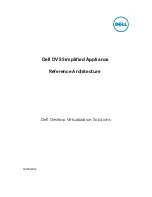
12
Chapter 4. Getting In and Out of gdb
gdb -silent
You can further control how gdb starts up by using command-line options. gdb itself can remind you
of the options available.
Type
gdb -help
to display all available options and briefly describe their use (
gdb -h
is a shorter equivalent).
All options and command line arguments you give are processed in sequential order. The order makes
a difference when the
-x
option is used.
4.1.1. Choosing files
When gdb starts, it reads any arguments other than options as specifying an executable file and core
file (or process ID). This is the same as if the arguments were specified by the
-se
and
-c
(or
-p
options respectively. (gdb reads the first argument that does not have an associated option flag as
equivalent to the
-se
option followed by that argument; and the second argument that does not have
an associated option flag, if any, as equivalent to the
-c
/
-p
option followed by that argument.) If the
second argument begins with a decimal digit, gdb will first attempt to attach to it as a process, and if
that fails, attempt to open it as a corefile. If you have a corefile whose name begins with a digit, you
can prevent gdb from treating it as a pid by prefixing it with
./
, eg.
./12345
.
If gdb has not been configured to included core file support, such as for most embedded targets, then
it will complain about a second argument and ignore it.
Many options have both long and short forms; both are shown in the following list. gdb also recognizes
the long forms if you truncate them, so long as enough of the option is present to be unambiguous.
(If you prefer, you can flag option arguments with
-
rather than
-
, though we illustrate the more usual
convention.)
-symbols
file
-s
file
Read symbol table from file
file
.
-exec
file
-e
file
Use file
file
as the executable file to execute when appropriate, and for examining pure data in
conjunction with a core dump.
-se
file
Read symbol table from file
file
and use it as the executable file.
-core
file
-c
file
Use file
file
as a core dump to examine.
Summary of Contents for ENTERPRISE LINUX 4 - DEVELOPER TOOLS GUIDE
Page 1: ...Red Hat Enterprise Linux 4 Debugging with gdb ...
Page 12: ...2 Chapter 1 Debugging with gdb ...
Page 28: ...18 Chapter 4 Getting In and Out of gdb ...
Page 34: ...24 Chapter 5 gdb Commands ...
Page 44: ...34 Chapter 6 Running Programs Under gdb ...
Page 68: ...58 Chapter 8 Examining the Stack ...
Page 98: ...88 Chapter 10 Examining Data ...
Page 112: ...102 Chapter 12 Tracepoints ...
Page 118: ...108 Chapter 13 Debugging Programs That Use Overlays ...
Page 138: ...128 Chapter 14 Using gdb with Different Languages ...
Page 144: ...134 Chapter 15 Examining the Symbol Table ...
Page 170: ...160 Chapter 19 Debugging remote programs ...
Page 198: ...188 Chapter 21 Controlling gdb ...
Page 204: ...194 Chapter 22 Canned Sequences of Commands ...
Page 206: ...196 Chapter 23 Command Interpreters ...
Page 216: ...206 Chapter 25 Using gdb under gnu Emacs ...
Page 296: ...286 Chapter 27 gdb Annotations ...
Page 300: ...290 Chapter 28 Reporting Bugs in gdb ...
Page 322: ...312 Chapter 30 Using History Interactively ...
Page 362: ...352 Appendix D gdb Remote Serial Protocol ...
Page 380: ...370 Appendix F GNU GENERAL PUBLIC LICENSE ...
Page 386: ...376 Appendix G GNU Free Documentation License ...
Page 410: ......
















































